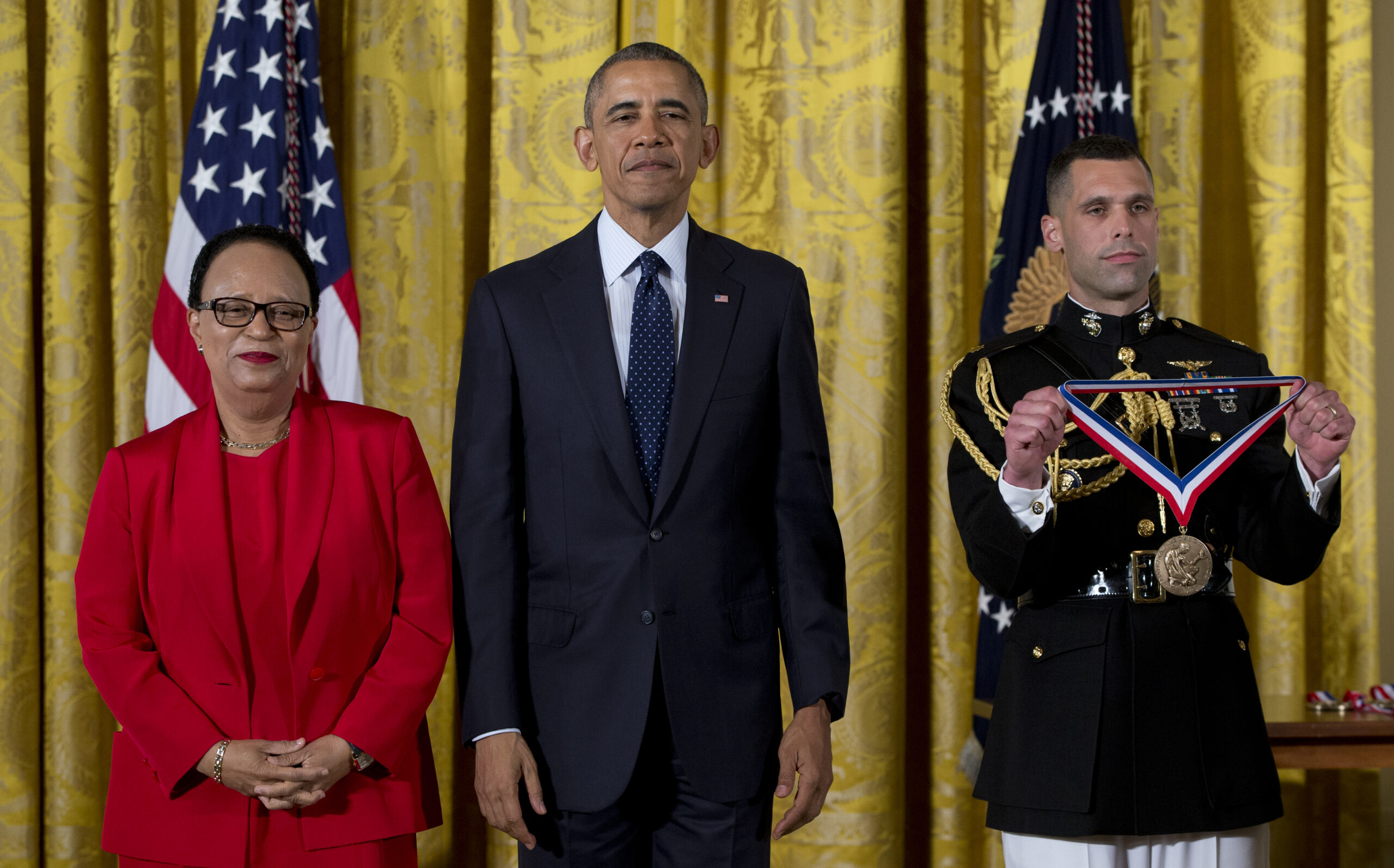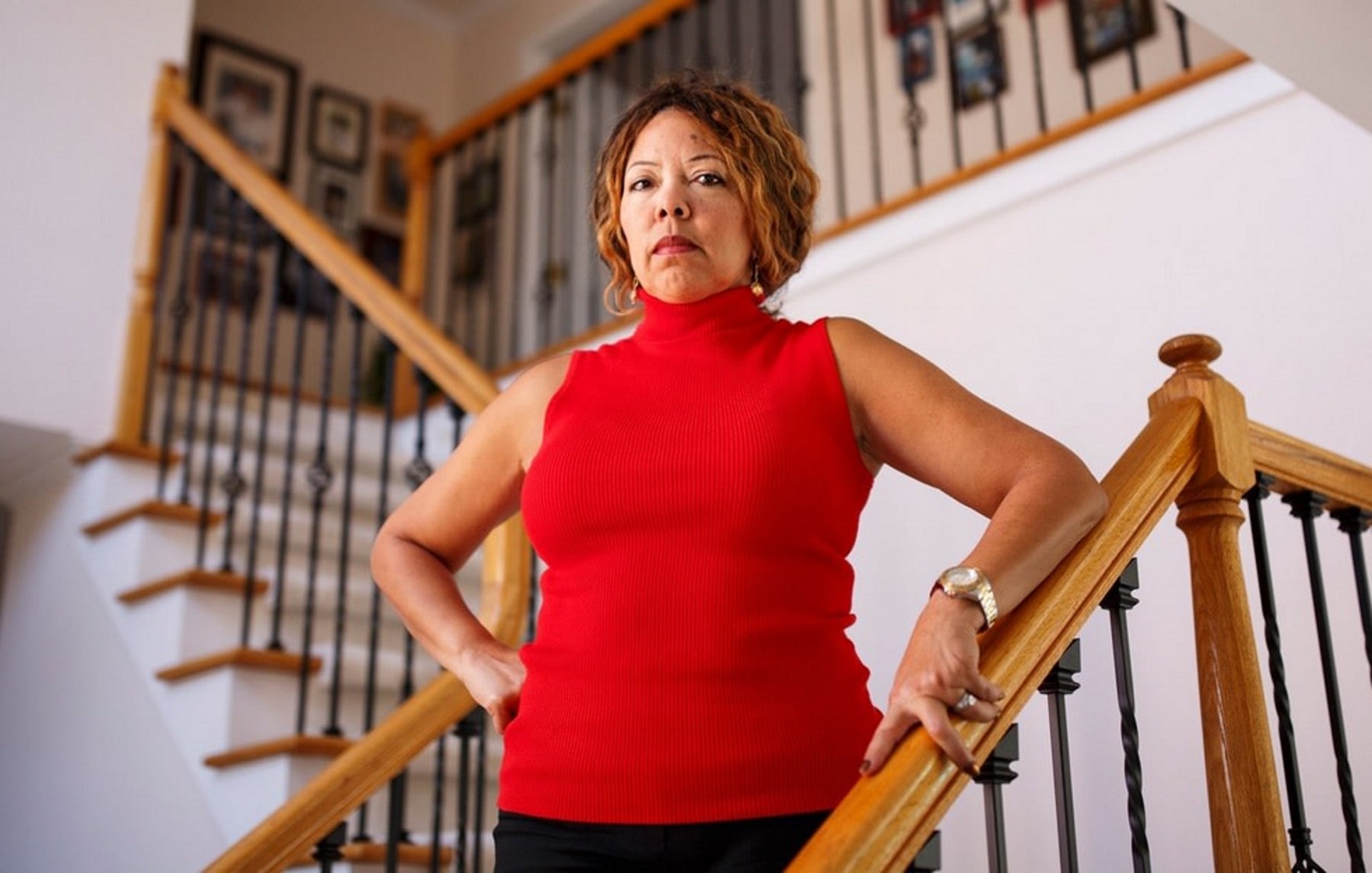VOX ATL Teen Looks At 4 Black Creators Who Have Had Impact On Our Day-To-Day Lives

In 2016, President Barack Obama stands with Dr. Shirley Jackson, before awarding her the National Medal of Science during a ceremony at the White House. Jackson conducted numerous successful theoretical physics experiments, making breakthrough scientific research.
Carolyn Kaster / Associated PRess file
By Ramaya Thomas
Black History Month, a month of celebration and recognition, but also a month to continue reflecting.
See like many, I have realized February isn’t much different from January or March because I will continue to celebrate the liberation and progression of Black people even after a month dedicated to acknowledging our worth.
Oftentimes we will hear about these amazing Black creators and inventors, but have you ever really sat back and thought: How many things were created by Black people? Could I live my life as easily without these creations?
Let’s see how many things you’re using in your day-to-day life that were created by or improved by Black inventors and contributors.
Dr. Herbert Smitherman
Smitherman was an influential and pioneering executive and professional chemist at Proctor & Gamble.
He led the way for many other Black/African-American people in the 1960s. With a Ph.D. in physical organic chemistry, Smitherman developed numerous notable patents, including Crest toothpaste, Safeguard soap, Bounce fabric softeners, Crush soda and many more.
Before turning in his lab coat, Smitherman spent 29 years developing and improving several products we use to enjoy with friends, maintain our oral care and even wash clothes.
Smitherman’s legacy was left in association with historically Black colleges and universities such as Tuskegee Institute and Howard University, where he received his Ph.D., and Wilberforce University, where he later taught, inspired and empowered many of his students before his passing in 2010.
Mary Kenner
Mary Beatrice Davidson Kenner was the pioneering inventor most noted for her development of the sanitary belt (menstrual pad). Due to known racial discrimination, the patent for her notable creation was prevented for 30 years.
In 1957, Kenner filed for her very first patent for the idea she created when she was 18 years old. During this time, many women were still using uncomfortable and unsanitary cloth pads and rags during their menstrual cycle.
Although tampons were available during the 1930s, they were deemed socially unacceptable or too “indecent” for regular use.
As a result of these societal expectations, women were often confined indoors during their periods. It was Kenner’s idea that aimed to challenge the status quo forever.
Her patent features an adjustable belt with an inbuilt, moisture-proof napkin pocket. This design would significantly decrease the likeliness of leakage and provided women the freedom to feel comfortable, confident and OK to leave their homes while menstruating.
Dr. Shirley Jackson
In 1973, Jackson was the first Black woman to receive her doctorate degree in physics from the Massachusetts Institute of Technology, also making her the second African American woman in the United States to earn a Ph.D. in physics.
In 1976, Jackson joined the Theoretical Physical Research Department at AT&T Bell Laboratories. Notably, Jackson conducted numerous successful theoretical physics experiments, making breakthrough scientific research that enabled others to invent the fax machine, the touch-tone phone, solar cells and the technology behind caller ID and call waiting.
Thanks to Dr. Jackson, today I am able to use my phone easily and communicate with my friends all day long.
Marie Van Brittan Brown
In 1966, Nurse Brown developed an early version of the home-security system that many of us use today.
Brown invented this device to create a sense of security while she lived in the midst of high crimes in Queens, New York. Brown’s device allowed a camera to be used through the peepholes in her front door. This was then projected into a monitor within her house, which helped her watch unwanted visitors.
Brown added a microphone and buttons to unlock the door and contact the police before patenting the system in 1969.
These are just a fraction of the many Black inventors and creators who have helped make our lives so much easier. I question the many ideas and creations other Black creators had but couldn’t get patented in time or were denied, due to racial discrimination.
The four creators listed here deserve to be acknowledged and celebrated — not just in this month of February, but moving forward — for their notable and life-changing contributions.
Ramaya is a student at Atlanta International School who enjoys activism for social justice and listening to H.E.R.
This story was published at VOXATL.org, Atlanta’s home for uncensored teen publishing and self-expression. For more about the nonprofit VOX, visit www.voxatl.org.








